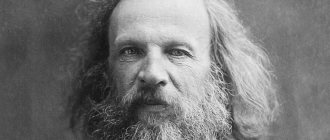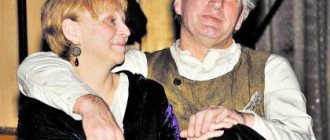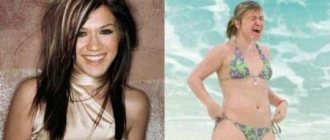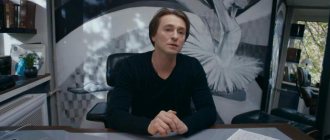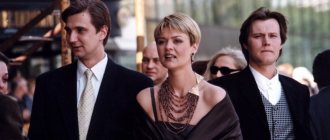Biography of Stephen Hawking
Stephen Hawking is a brilliant British scientist - theoretical physicist, founder of quantum cosmology, the main expert of our time in the study of the universe, an authoritative specialist in the study of black holes and the principles of quantum gravity.
Pictured: Stephen Hawking
The life of this amazing man is an example of incredible love of life and fortitude, which allowed him, almost completely paralyzed, not only to make sensational scientific discoveries, but also to remain a full-fledged member of society.
Stephen Hawking: confession
The scientist’s favorite elements were cosmology and quantum gravity. Hawking studied thermodynamic processes that arise in black holes and dark matter. He was the first to notice that cosmic black holes can disappear (evaporate). The phenomenon that described these evaporations was named after the researcher - “Hawking radiation.” According to the theory, objects cannot lose weight. Using quantum mechanics, he came to the conclusion that black holes emit energy because particles are formed very close to them.
In the 1960s, Hawking worked on the general theory of relativity. He was able to argue that this theory is correct and the Universe is expanding, then metamorphoses in it could have occurred at its birth.
However, perhaps his most important achievement was the writing of the book A Brief History of Time, published in 1988. Very soon this work became a real bestseller. Stephen in it avoided the incomprehensible academic language and tried to explain in an intelligible form how our Universe began. Hawking wrote about such difficult questions for the common man as the nature of space and time, black holes and superstring theory. The clarity of his narration is truly amazing. The scientist also touched upon problems in mathematical science. Moreover, in the entire book he used only one formula - the equivalence of mass and energy. The book set many sales records. Thus, A Brief History of Time was the best-selling book in the UK for four years.
After the success of this book, Stephen Hawking began to be called “one of the main popularizers of science.” Stephen co-authored the book “George and the Secrets of the Universe” with his daughter. He also authored such works as “Black Holes and Young Universes”, “The World in a Nutshell”, “Big, Small and the Human Mind”.
The British scientist made many documentaries in which he spoke in simple language about the theory of the Big Bang and the creation of the Universe (“Into the Universe with Stephen Hawking”, “The Grand Design according to Stephen Hawking”)
During his life, Stephen Hawking received a huge collection of awards. He was elected a member of the Royal Society of London at the age of thirty-two. He became one of its youngest members. In 1979 he was awarded one of the most prestigious positions in the world - he became Lucasian Professor of Mathematics. Besides him, this title was held by such outstanding scientists as Isaac Newton, Charles Babbage and others.
Despite the fact that Hawking is an atheist by religious beliefs, he was even noted by the Pontifical Academy of Sciences. Since 1992 he has been a member of the American Academy of Sciences.
Childhood and family
Stephen Hawking's parents came from once wealthy families that were ruined by the financial crisis of the 20s.
Despite their modest financial situation, both studied at Oxford University, although they did not meet within the walls of the university: Frank Hawking studied medicine, and Isobel Walker, the daughter of a doctor, became one of the first women to achieve the right to higher education at such a prestigious university, and studied philosophy, political science and economics. After graduation, Isobel changed several jobs, but all of them could not compare with the prestigious positions that men who graduated from Oxford tended to receive. After working as a tax inspector and hating this job, the woman gave up everything and got a job as a secretary at the Hampstead Medical Research Institute. This is how she met her future husband, doctor Frank Hawking, who specialized in tropical diseases.
Isobel and Frank Hawking
At the beginning of World War II they got married. Isobel was in her last month of pregnancy when the couple decided to move from north London, which was regularly bombed by the Germans, to the quieter Oxford, which Germany, along with Cambridge, had promised not to bomb in exchange for Britain's promise not to touch Germany's main universities.
A week before Isobel gave birth, she was walking through the streets of Oxford and, going into a bookstore, on some inexplicable impulse bought an atlas of the starry sky. Subsequently, she regarded this act as a sign that anticipated the achievements of her child. As does the fact that Stephen was born on the 300th anniversary of the death of Galileo Galilei, inventor of the telescope.
Stephen Hawking's parents hold their first child in their arms
Stephen was born on January 8, 1942, the first of Frank and Isobel's four children. In addition to Stephen, his two sisters, Mary and Philippa, as well as his adopted son Edward, were growing up in the family. In the 50s, the father of the family headed the department of parasitology at the National Institute for Medical Research, and the Hawkings moved to St. Albans, Hertfordshire.
Little Stephen Hawking with his sisters Philippa and Mary
The townspeople considered the Hawkings to be smart but eccentric people. The family members dined in deathly silence: everyone read something while eating. They lived in an old, large, but by no means spacious house, cluttered with all sorts of rubbish and in need of repair. Frank had a modest car that had been a taxi in the past.
Stephen Hawking's childhood home
The father dreamed of sending his son to the prestigious Westminster boarding school, but the education was too expensive. Stephen was among the applicants for the grant, but fell ill on the day of the exams and ended up having to attend a regular city school.
Stephen grew up as an active, inquisitive and persistent child.
Stephen grew up as an inquisitive and resourceful child, persistent and persistent. He liked to feel like a winner; he had no equal in checkers and chess. Parents devoted a lot of time and effort to the intellectual development of their children, there were many books in the house, and conversations were often held about theology and the laws of the universe. The Hawkings taught their offspring to think big and always get to the bottom of things, not trusting other people's value judgments. There were no taboo topics in the family; issues of sexual relations, homosexuality and unwanted pregnancy were openly discussed with the children, which was quite unusual for prim, conservative England.
Stephen Hawking as a child
As a teenager, Stephen developed and assembled his first computer with friends, which, although it was the size of a refrigerator, solved binary logic problems. But at school the young man was far from the best student, although his classmates nicknamed him Einstein. Stephen had no particular desire to spend his precious time on lessons, and most subjects were boring. He preferred to engage in self-education, solve complex logical problems, or simply stare at the starry sky for hours, sitting with his mother in the backyard and thinking about the secrets of the Universe.
Education
After graduating from high school, the young man was faced with the question of his future profession. His father insisted on medical education, but Stephen was closer to mathematics, natural science and physics.
Stephen Hawking is a first-year student at Oxford University
At the age of 17, the young man easily entered the famous Oxford University, from which his parents had graduated, began studying physics and soon became one of the best students on the course.
Stephen on the varsity rowing team (right)
Studying was easy for him, leaving time for sports (at Oxford he took up rowing) and cheerful friendly parties. In addition, Steve had a wonderful sense of humor and was the soul of any youth company.
Hawking was the life of any company (pictured: in a white shirt, holding a scarf)
Hawking later estimated that during his three years at Oxford he attended only a thousand hours of classes (about one hour a day), but he was nevertheless considered an outstanding student with a deep intellect and an unusually broad outlook.
Hawking graduated from Oxford University in 1962 with honors.
Becoming a scientist
They say that the future of a child is determined by parents. Stephen Hawking's life was no exception. In 1962, the young man successfully graduated from Oxford University with a Bachelor of Science degree, and after 4 years he became a Doctor of Philosophy at Cambridge University College, defending his first scientific work on the properties of expanding universes. From 1965 to 1979, Stephen devoted himself to active scientific work , teaches physics and mathematics. During this period, the young scientist becomes a fellow at the California Technical University. As Hawking himself stated, he had never studied an exact discipline since the school curriculum, and prepared for classes two weeks before they took place. At the age of 32, Stephen Hawking became a Member of the world's oldest scientific association - the Royal Society. Five years later, and until 2009, he is a professor at the University of Cambridge. In the early 70s, the scientist attended an international seminar in the USSR.
Disease
In 1962, Stephen graduated with honors from Oxford and entered Cambridge University to complete his PhD. By this time, he had already begun to show signs of a terrible illness, which soon radically changed his life and made Hawking disabled.
Stephen Hawking before his illness
At first, the young man began to notice that his movements had become awkward and unbalanced, then he began to faint, after which he could not come to his senses for a long time and did not understand where he was. For some time he managed to hide his health problems from his family, but the disease progressed, and soon it became obvious to everyone that he was seriously ill. Doctors gave young Hawking two years to live. The doctors' conclusion plunged the young man into a state of deep depression - he withdrew into himself, did not communicate with anyone, and the whole family was shocked by what was happening.
Stephen was just about to marry Jane Wilde; he was predicted to have a great future. And now the rosy plans were crumbling before our eyes. Stephen was depressed and did not understand what to do. He no longer saw the point in continuing scientific research; a doctorate also seemed unnecessary and useless to him. Hawking listened to Wagner for days and prepared for imminent death, but fate decreed otherwise and gave him the opportunity to return to a full life, albeit in a wheelchair, to which Stephen found himself confined in 1969.
Wedding of Stephen Hawking and Jane Wilde
Jane was not afraid of the diagnosis. They married on July 14, 1965, and two years later their first child, Robert, was born. His wife became a loyal friend, devoted colleague and loving wife for Stephen. Hawking continued his studies and received a PhD in physics from Cambridge. In 1966, his essay on the singularity, “Singularities and the Geometry of Spacetime,” was awarded the Adams Prize, given to the best young mathematical scientist in Britain.
In 1969, Hawking was forced to use a wheelchair
The couple had to go through many difficult moments together - in 1985, Stephen became seriously ill with pneumonia and, after a tracheostomy, almost completely lost the ability to speak. For communication, a special computer with a speech synthesizer was built into his wheelchair. At first, Hawking controlled it with the finger of his right hand, and when it completely atrophied, he controlled it with the muscle of his cheek, to which a special sensor was attached.
In 1985, Stephen Hawking's chair started talking
Falling in love and getting engaged became a powerful motivation for Hawking - he needed to get a doctorate and find a good job to support his family. However, the material side of the issue has always been in second place. The scientist has said more than once that his interest in exploring the secrets of our universe means disproportionately more to him than any awards or money. He resumed his research into the Big Bang theory. Scientific substantiations of the possible origin of the universe helped the young scientist not only successfully defend his dissertation, but also receive a grant for further research. Stephen Hawking: about life, disability and humor
Stephen Hawking: illness
The first signs of the disease appeared when Hawking was only twenty-one years old. Doctors then diagnosed him with amyotrophic lateral sclerosis, also known as motor neurone disease or Lou Gehrig's disease. Hawking was shocked that he was terminally ill. The brain stopped giving orders to the whole body. Doctors then gave him only a couple of years to live. However, doctors soon discovered that the disease was not progressing as quickly as they had expected.
Over the course of decades, this disease gradually paralyzed the young scientist. At first, Stephen walked to university classes on crutches. Since the late 1960s, the scientist moved in a wheelchair. He will have to spend the rest of his life in a wheelchair. For a while, the only part of his body he could move was his index finger. Then the scientist could control only one muscle on his cheek. However, even being paralyzed, Hawking remained on the rowing team. It’s just that a young scientist has moved to the position of helmsman who doesn’t have to row.
At forty-three, Hawking contracted severe pneumonia. The scientist underwent several operations. To ensure free patency of the airways, he underwent tracheostomy surgery. But Hawking soon lost the ability to talk. Then a special speech synthesizer was developed for Stephen, which brought his voice back to life. They were able to place him in a Hawking wheelchair.
Career and scientific discoveries
Hawking's professional reputation was so high that after graduating from Cambridge, Stephen was offered a job at Gonville and Keyes College, one of the branches of the University of Cambridge.
In the 70s, his career rapidly gained momentum - Hawking taught at the departments of applied mathematics, astrology and theoretical physics, was engaged in research in the field of “black holes” and the origin of the Universe, and wrote many scientific papers that were awarded awards in the field of cosmology and astronomical physics . In 1970, the scientist discovered what is now called the “second law of black hole physics” - for any classical processes, the surface area of a black hole and, therefore, its entropy does not decrease. In 1973, Hawking's first book (co-authored with George Ellis), The Large-Scale Structure of Spacetime, was published. On 384 pages, the scientist outlined his view on the nature of black holes and the infinity of the universe.
Stephen Hawking in the early 70s
A year later, Stephen described in detail the electromagnetic radiation due to which “black holes” disintegrate and cease to exist. In 1975, this phenomenon was called “Hawking radiation.” A brief history of time His discoveries often shocked the scientific community, but over time it became clear that his theories not only had the right to exist, but were also confirmed by the research of other scientists. Several times Stephen made bets with his opponents, in which he did not always emerge victorious. To Hawking's credit, he was always able to admit his mistakes, which made him continue his search for truth with even greater zeal.
In 1974, the scientist became one of the youngest members of the Royal Society of London, and five years later - Lucasian Professor at the University of Cambridge. For more than twenty years, Hawking led a group dealing with the theory of relativity and the principles of gravity, and in 2007 he founded the Center for Theoretical Cosmology at Cambridge.
Stephen Hawking visited the Soviet Union several times: in 1973 he discussed the problem of “black holes” in Moscow with leading Russian physicists Zeldovich and Starobinsky, and in 1981 he took part in an international seminar on quantum gravity.
Stephen Hawking in the USSR (1973)
In 1981, during a conference in the Vatican, Hawking presented his work, in which he noted that the universe is probably infinite. A few years later, Stephen, together with James Hartle, refuted the concept of the birth of the Universe in the usual sense. In their opinion, the universe had no beginning, it was singular in space and time even before the Big Bang, it has no beginning, just as there is no end. Stephen Hawking and the Theory of Everything Thinking of the universe as a quantum particle, Hawking and Hartle proposed that the cosmos had the shape of a shuttlecock, expanding indefinitely upward from zero diameter at the bottom, and derived a formula for the wave function of the universe, enclosing the totality of all possible universes.
Hawking's outstanding contribution to science has been recognized by numerous honorary awards, including the Order of the British Empire, the Order of the Knights of Honour, the Pius XI Gold Medal awarded by the Pontifical Academy of Sciences, and other orders and medals from various countries.
Scientific activity
Hawking's main area of scientific research is cosmology and quantum gravity, and he devoted a lot of time to the study of black holes. In particular, he was the author of the theory of “evaporation” of black holes due to radiation (this phenomenon was called “Hawking radiation”). In 2016, he put forward a hypothesis according to which the source of practically unlimited energy is microscopic black holes with enormous mass. In the same year, he became one of the initiators of a project to send mini-devices to the Alpha Centauri star system.
He began his research activities while still studying at Cambridge. He was a research fellow at Gonville and Keyes University College, then became an assistant professor. He taught the theory of gravity and gravitational physics. Until 1973 he worked at the University's Institute of Astronomy, after which he moved to the Department of Applied Mathematics and Theoretical Physics at Cambridge.
In 1974, Hawking was invited to work at the California Institute of Technology (USA), where, in particular, he worked on the general theory of relativity.
After some time, he returned to Cambridge to the department of applied mathematics and theoretical physics. From 1979 to 2009 he was Lucasian Professor of Mathematics (one of the most prestigious academic positions in the world; established in 1664 on the initiative of the English priest and politician Lucas Henry). For more than 20 years he headed a group dealing with problems related to the theory of relativity and issues of gravitation (the group was created at the department in 1961). Before his death, he served as director of research at the department. In 2007 he founded the Center for Theoretical Cosmology at the University of Cambridge.
He visited the USSR for scientific purposes. Thus, in 1973 in Moscow he discussed the problems of black holes with scientists Yakov Zeldovich and Alexei Starobinsky, and in 1981 he again arrived in Moscow to participate in an international seminar on the quantum theory of gravity.
Popularization of science and forecasts for the future
The scientist admitted that his first large-scale work (“Large-scale structure of space-time”) turned out to be too difficult for even a trained reader to understand. At the same time, Stephen was eager to share his discoveries with the public and considered the popularization of science to be the most important contribution to the development of civilization. My short story. Stephen Hawking. Documentary film He wrote and published more than two dozen books, which were sold throughout the world in huge quantities. Among them are many books for children, written in simple, accessible language. In 1988, he published the popular science work “A Brief History of Time,” which has now been translated into 40 languages. It explains string theory and the Big Bang in a way that is accessible to the general reader.
First edition of A Brief History of Time signed by Hawking
Hawking also actively participated in the creation of documentaries that reveal the secret of the origin of the Universe and other worlds. The most famous are “The Universe of Stephen Hawking” (1997), “Into the Universe with Stephen Hawking” (2010), “The Grand Design According to Stephen Hawking” (2012), “The Science of Stephen Hawking” (2014). In the latter, the scientist shares his thoughts on the future of earthly civilization, which, in his opinion, is in serious danger. Hawking considered uncontrolled research in the field of genetics and artificial intelligence, which could lead to irreversible consequences, to be another risk factor. Together with Elon Musk and Steve Wozniak, the scientist wrote an open letter addressed to the governments of leading countries, calling for a ban on the development of killer robots and an end to the arms race.
Hawking believed that the Earth was doomed to destruction
Stephen saw many options for the death of the planet and by 2600 he predicted the complete destruction of earthly civilization. Based on this, he called for starting now to search for a new home for future generations and, before it’s too late, to explore outer space. He was sure that we are not alone in the Universe, although he assumed that a meeting between earthlings and aliens could carry certain risks.
Hawking has appeared on screen more than once, starring in feature films, TV series and commercials. His film debut took place in the multi-part film “Star Trek: The Next Generation”; the scientist can also be seen in several episodes of the cult series “The Big Bang Theory”. In addition, Stephen became the hero of popular cartoons (“The Simpsons”, “Futurama”), the characters of which speak in his voice. Hawking's unusual synthesized voice can also be heard in some of Pink Floyd's musical compositions.
Stephen Hawking in The Simpsons In 2014, the world premiere of the feature film “Stephen Hawking's Universe” took place, based on the memoirs of his first wife Jane. The role of the scientist was played by British actor Eddie Redmayne, for this work he received a Golden Globe and many other prestigious film awards.
Left: Eddie Redmayne as Stephen Hawking
Popularization of science
Hawking is the author of popular science books, including for children, and took part in the creation of educational films. One of his most popular works is “A Brief History of Time” (1988). In 1993, the book “Black Holes and Young Universes” was published, in 2001 - “The World in a Nutshell”. In 2005, A Brief History of Time was published (a new edition of the 1988 bestseller; co-authored with Leonard Mlodinow).
Among the films with his participation are the six-part film “The Universe of Stephen Hawking” (1997), the three-part film “Into the Universe with Stephen Hawking” (2010) and “The Grand Design According to Stephen Hawking” (2012).
In 2020, he became one of the founders of the medal bearing his name, which is awarded annually to scientists and artists for their contribution to the popularization of science. The scientist believed that science should become as popular as music. The first laureates in 2020 were British theoretical physicist Jim Al-Khalili and German composer Hans Zimmer, who creates, in particular, music for films and computer games.
Personal life of Stephen Hawking
Despite his severe disability, Hawking always remained an active person living a full life. He traveled a lot, gave presentations and lectures around the world, and even flew in conditions close to weightlessness. Stephen was married twice and left behind three children.
Stephen Hawking and his wife Jane in his youth
Hawking's first wife was philologist Jane Wilde, whom he met while studying at Oxford at one of the student parties. The lovers got married in 1965, and two years later they had their first child, Robert (1967). Jane gave birth to Stephen two more children - daughter Lucy (1970) and son Timothy (1979) - for twenty-five years she was his faithful friend and devoted ally.
The disease did not prevent Hawking from being a caring father
At first, it seemed to her that together they would be able to overcome all difficulties, but Hawking’s disease progressed, and it became increasingly difficult for the woman to cope with raising children and her husband’s serious illness. She had to surround Stephen with a whole staff of nurses, and given that most of the time he was immersed in his scientific research, Jane at some point felt lonely and unnecessary. In 1990, the couple divorced, managing to maintain friendly relations.
Stephen Hawking with his wife and children
In 1995, Stephen married his caregiver Elaine Mason, with whom he lived for eleven years and divorced in 2006. His children did not like their stepmother; their words were even published in the press that they found traces of physical violence on their father’s body, which Elaine allegedly inflicted. Stephen himself never confirmed this information.
Stephen Hawking and his second wife
After the divorce, he was not left alone - the children always tried to be close, colleagues and students provided all possible help. One of the scientist’s close friends was the famous Hollywood comedian Jim Carrey.
With Jim Carrey
Personal life
Despite all his health problems, Stephen Hawking's life was not much different from the average person. The scientist had two wives. Hawking's first wife was Jane Wilde. Their marriage broke up in 1990, after 25 years of marriage. During this period, the couple had two wonderful sons and a daughter. Already in 1995, Stephen legalized his relationship with his nurse, but after 11 years their union broke up. Undoubtedly, Hawking left a deep mark on every person, even those who did not know him, so to the question “In what year did Stephen Hawking die?” many will know. The spirit of adventurism, the search for beauty and significance, the fight against climate change, wars, nuclear disarmament - all this will continue to exist and develop on the fundamental material of the great scientist of two centuries.
Death
Stephen Hawking died on March 13, 2020 at his home in Cambridge, surrounded by family and friends, he was 76 years old.
The scientist's ashes were buried on the grounds of Westminster Abbey, between the graves of Isaac Newton and Charles Darwin. At the moment of burial, a special radio signal with a message from the deceased was sent from the satellite dish of the European Space Agency in the direction of the nearest “black hole”, which symbolized his long-standing dream of conquering outer space.
Funeral of Stephen Hawking The memorial service was held to the music from the movie “Chariots of Fire,” written by the Greek composer Vangelis. In addition to family, friends and colleagues, the funeral ceremony was attended by British astronaut Timothy Peake and the popular actor Benedict Cumberbatch, who played Hawking in the BBC television series.
Stephen Hawking's gravestone
Stephen Hawking's tombstone is engraved with the inscription: "Here lies what was Stephen Hawking's mortal coil from 1942 to 2018," as well as his equation describing the entropy of a black hole.
Heirs
Robert Hawking lives in the USA. As a child, he wanted to follow in his father's footsteps and study physics, but became interested in programming. Now he is engaged in software development. He has a close relationship with his brother and sister, since in childhood he largely replaced their father.
Robert Hawking
Lucy, Stephen Hawking's middle child, inherited her mother's humanitarian inclinations. She is a journalist and the author of a number of children's books. In collaboration with his daughter, Stephen wrote a series of books about space for children, including the famous “George and the Secrets of the Universe”
Lucy Hawking
Lucy married a UN Peace Corps soldier and had a son, William, with him. This is the only grandson of Stephen Hawking. A year after his birth, the boy was diagnosed with autism, and five years later, Lucy divorced her husband, became depressed and became addicted to alcohol. However, she managed to get rid of addiction for the sake of her son, and now she not only writes children's books, but also generously donates to charities that help autistic children.
The youngest son, Timothy Hawking, works at the Lego Corporation - he heads the department for the development of loyalty programs. Unlike his brother and sister, he always had difficulty communicating with his father due to Stephen's speech problems. “I couldn’t understand his speech, and for the first five years of my life I didn’t talk to him at all,” Tim recalled.
Timothy Hawking
Posthumous works and memory
The scientist gave his last interview in October 2020.
His last words to the world were heard posthumously, in April 2020, in the documentary “Leaving the Earth: How to Colonize the Planet.” One of Hawking’s last works, entitled “A Smooth Exit from Eternal Inflation,” dedicated to the origin of the universe, was published in May 2020. In October, the article “Black Hole Entropy and Soft Hair” was published, in which the scientist proved that after an object falls into a black hole, not all information about this object disappears without a trace. Hawking’s latest popular science book, “Brief Answers to the Big Questions,” was published in 2020.
Stephen Hawking's stroller sold at auction
In November 2020, Hawking's personal belongings, including his dissertation and wheelchair, went under the hammer. The proceeds from the chair (more than $2.3 million) went to the Stephen Hawking Foundation, which researches motor neuron disease.
Coin in honor of Stephen Hawking
In March 2020, the British Mint began issuing commemorative 50 pence coins with Stephen Hawking's equation.

